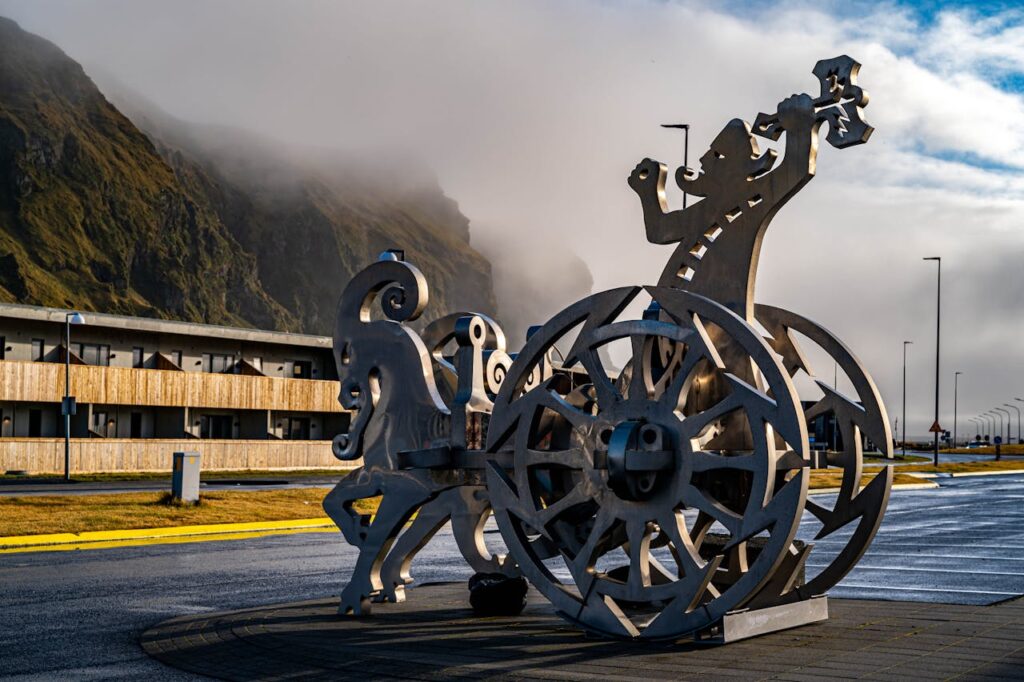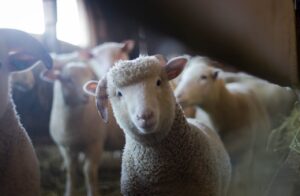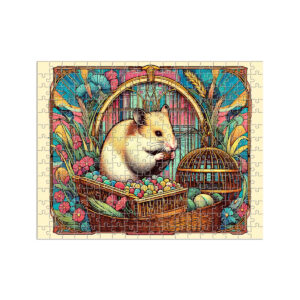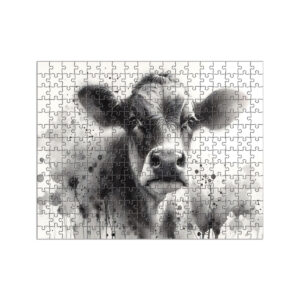
Explore & Play
Discover interesting topics and solve the accompanying crossword puzzle.
Mythical Figure Crossword | Explore Deities Across Cultures
Table of Contents
Welcome to our exploration of fascinating myths and deities! Before diving into the article, we encourage you to try your hand at the Mythical figure crossword. This fun challenge will help familiarize you with key characters from various cultures. If you’re new to this topic, feel free to read the article first for context and insights, and then return to the crossword for an engaging way to reinforce your knowledge. Enjoy your journey through the world of mythology!
Mythical Figure Crossword
You can either fill in the crossword puzzle directly on this page or click the button in the bottom right corner to print it for free.

The Pantheon of Deities: Exploring Gods Across Cultures
Myths and deities from various cultures offer a rich tapestry of stories that reflect the values, fears, and aspirations of humanity. From the mighty gods of ancient Greece to the revered spirits of indigenous cultures, these figures help shape our understanding of life, death, and everything in between. In this article, we will explore a diverse range of deities, weaving in a crossword puzzle featuring 50 mythical figures for an engaging challenge. Let’s embark on this journey through the pantheon of gods and heroes.
I. The Concept of Deity in Mythology
Understanding what a deity represents can enhance our appreciation for the myths surrounding them. Deities serve as embodiments of natural forces, moral ideals, and cultural values. They often reflect the characteristics of the societies that worship them, offering insights into human behavior and societal norms. For example, while some deities symbolize chaos and destruction, others embody love, wisdom, and harmony. This duality highlights the complexity of human nature and the diverse ways cultures interpret the world around them.
II. Major Pantheons Around the World
Each culture boasts a unique pantheon that provides insight into their beliefs and values. Let’s delve into some of the most significant pantheons across different civilizations.
A. Greek Pantheon
The Greek gods, led by Zeus, embody the human experience with their complex relationships and adventures. Zeus, the king of the gods, is known for his power and authority, but he is also famous for his numerous romantic escapades. Other prominent figures include Athena, the goddess of wisdom and warfare, and Hades, the god of the underworld, who oversees the realm of the dead. Hercules, a demigod known for his incredible strength, undertakes twelve labors, each reflecting his heroism and resilience.
B. Norse Pantheon
The Norse gods, including Odin and Thor, illustrate a world governed by fate and valor. Odin, the allfather, is associated with wisdom and knowledge, often sacrificing much to gain greater understanding. Thor, the thunder god, wields his hammer Mjölnir, symbolizing protection and strength. Freyja, the goddess of love and fertility, showcases the importance of beauty and war in Norse culture, while Loki, the trickster god, brings a sense of chaos and humor to the pantheon.
C. Egyptian Pantheon
Egyptian mythology is replete with gods like Ra and Anubis, who reflect the importance of the afterlife. Ra, the sun god, represents life and creation, often depicted as a falcon soaring across the sky. Anubis, the god of mummification, oversees the transition of souls into the afterlife, ensuring they receive the proper rites. Other notable figures include Isis, the goddess of magic and motherhood, and Horus, the sky god, who symbolizes kingship and protection.
D. Hindu Pantheon
Hinduism presents a diverse array of deities, such as Ganesha and Shiva, each representing different aspects of life. Ganesha, the remover of obstacles, is revered for his wisdom and benevolence, often called upon for guidance in new ventures. Shiva, known as the destroyer and transformer, embodies the cyclical nature of creation and destruction, reminding followers of the impermanence of life. Brahma, the creator god, completes the Trimurti, illustrating the balance of creation, preservation, and destruction.
E. Aztec Pantheon
The Aztecs worshipped gods like Quetzalcoatl, showcasing their reverence for nature and the cosmos. Quetzalcoatl, the feathered serpent, represents wind, learning, and the arts, embodying the duality of life. Tlaloc, the rain god, is vital for agriculture, illustrating the connection between deities and the natural world. These figures reflect the Aztec belief in the importance of balance between humanity and nature.
III. The Role of Female Deities
Female figures in mythology often symbolize power, fertility, and wisdom. Their stories provide crucial insights into the societal roles women have played throughout history.
A. Goddesses in Greek Mythology
Greek goddesses like Athena and Demeter exemplify wisdom and nurturing roles. Athena, known for her strategic warfare and wisdom, also embodies the ideals of civilization. Demeter, the goddess of agriculture, represents fertility and the changing seasons, emphasizing the connection between women and the earth.
B. Goddesses in Norse and Egyptian Mythology
Norse goddesses such as Freyja and Egyptian goddesses like Isis highlight female strength and protection. Freyja, a fierce warrior and lover, is often sought for her guidance in battle, while Isis, revered for her magical abilities, symbolizes motherhood and resurrection. Together, these figures demonstrate the multifaceted roles women play in mythology.
IV. Mythical Heroes and Their Legends
Heroes across cultures share journeys that reflect human struggles and triumphs. Their tales often serve as moral lessons, inspiring generations to aspire to greatness. These legendary figures exemplify virtues such as courage, loyalty, and resilience, allowing us to connect deeply with their stories.
A. Heroes of Greece and Ireland
Figures like Hercules and Cú Chulainn are renowned for their extraordinary feats and bravery, each representing the pinnacle of heroism in their respective cultures.
Hercules, a demigod and son of Zeus, is best known for his Twelve Labors, a series of seemingly impossible tasks assigned to him as punishment. These labors include slaying the Nemean Lion, capturing the Golden Hind, and retrieving the Apples of the Hesperides. Each labor not only tests his strength but also his intelligence and determination, showcasing the importance of perseverance in the face of adversity. Hercules embodies the spirit of heroism, demonstrating that true strength lies not just in physical power but also in moral integrity and courage.
Similarly, Cú Chulainn, an Irish warrior of extraordinary skill, is celebrated for his unmatched strength and valor. His legendary exploits, such as single-handedly defending Ulster against an invading army, highlight the themes of sacrifice and loyalty to one’s people. Cú Chulainn’s use of the “warp spasm,” a terrifying transformation that grants him immense power in battle, further emphasizes the connection between heroism and the supernatural in Celtic culture. His tales not only entertain but also convey moral lessons about bravery, honor, and the responsibilities that come with great power.
B. The Role of Tricksters
Trickster figures like Anansi and Loki provide comic relief and lessons in humility, often challenging the status quo while embodying a dual nature of wisdom and folly.
Anansi, the spider god from African folklore, is a master of cleverness and deceit. Known for outsmarting larger and more powerful foes, Anansi’s stories often revolve around his cunning tricks that serve to teach moral lessons. For instance, his adventures demonstrate the value of intelligence and resourcefulness over brute strength. Anansi’s tales not only entertain but also serve as vehicles for imparting wisdom about human nature, ethics, and the importance of community. His ability to navigate complex social dynamics illustrates how intelligence can be a powerful tool for overcoming adversity.
Loki, the Norse trickster god, embodies chaos and mischief. He frequently shifts allegiances and challenges the gods, often creating problems that require clever solutions. While Loki’s antics can be humorous, they also lead to significant consequences, highlighting the duality of his character. He teaches valuable lessons about the importance of consequences and morality, reminding us that intelligence can be just as powerful as strength. Ultimately, Loki’s narratives illustrate the complexities of human behavior and the fine line between chaos and order.
V. Creatures and Monsters in Mythology
Monsters often embody the fears and challenges faced by humans in their respective cultures. These creatures serve as symbols of the darker aspects of life, reflecting our anxieties and the moral dilemmas that arise from confronting the unknown. Through their stories, we can gain insight into how different societies understand and cope with these fears.
A. Mythical Creatures from Various Cultures
Creatures like Medusa and Cerberus serve as cautionary symbols in Greek mythology, each representing profound themes related to fear, power, and mortality.
Medusa, one of the three Gorgons, is perhaps one of the most iconic figures in mythology. With snakes for hair and the ability to turn anyone who gazes upon her into stone, she embodies the fear of the unknown and the consequences of hubris. Her story serves as a reminder that beauty and terror often coexist, reflecting society’s fears surrounding female power and jealousy. The myth of Perseus, who ultimately defeats Medusa, illustrates the triumph of heroism over fear, yet it also serves as a warning about the dangers of underestimating what is perceived as monstrous.
Cerberus, the three-headed dog that guards the entrance to the underworld, symbolizes the inevitability of death and the afterlife. This fearsome creature prevents souls from escaping while ensuring that the living do not enter the realm of the dead uninvited. Cerberus represents the boundary between life and death, reinforcing the notion that death is an inescapable part of the human experience. In many stories, encounters with Cerberus highlight the importance of respecting this boundary and confronting our fears about mortality.
B. The Importance of Mythical Beasts
In many cultures, beasts like Fenrir and Jormungandr illustrate the struggle between good and evil, encapsulating the eternal conflict that defines human existence.
Fenrir, the monstrous wolf in Norse mythology, is prophesied to kill Odin during Ragnarok, the cataclysmic end of the world. This beast represents unchecked power and the fear of destruction, embodying the darker aspects of fate. The myth surrounding Fenrir illustrates how even the gods are not immune to the forces of chaos and destruction, reminding us that power must be wielded with caution. The inevitability of Fenrir’s role in Ragnarok speaks to the idea that chaos is an integral part of life, challenging both gods and mortals alike.
Jormungandr, the world serpent, is another pivotal figure in Norse mythology. He encircles the Earth, symbolizing the cyclical nature of existence. Jormungandr’s destined battle with Thor during Ragnarok represents the struggle between order and chaos. As the two forces clash, they embody the eternal conflict that drives life forward, illustrating that every cycle of destruction also leads to rebirth. This myth emphasizes the interconnectedness of all beings and the ongoing battle between light and darkness.
VI. Death and the Afterlife
Myths surrounding death often reveal cultural attitudes toward mortality and the afterlife, offering profound insights into how societies cope with the concept of death. These stories not only reflect fears and beliefs about what comes next but also highlight the rituals and values that surround the end of life.
A. Deities of the Underworld
Hades and Anubis represent different approaches to death and the journey afterward, each reflecting the values and beliefs of their respective cultures.
Hades, the Greek god of the underworld, is often depicted as a stern yet just ruler. He presides over the realm of the dead, ensuring that the souls of the deceased are assigned to their appropriate places based on their actions in life. Hades is not an embodiment of evil; rather, he maintains order in the afterlife. His realm, often referred to as Hades or simply the Underworld, is divided into different regions, such as Elysium for the virtuous and Tartarus for the wicked. This structure emphasizes the Greek belief in accountability and the moral implications of one’s actions, even after death. Hades’ complex character reminds us that death is a natural part of existence, and the afterlife is governed by a sense of justice.
Anubis, the Egyptian god with a jackal head, oversees the mummification process and the weighing of souls, underscoring the importance of proper burial rites in Egyptian culture. He guides the deceased through the journey to the afterlife and plays a crucial role in the “Weighing of the Heart,” where the heart of the deceased is balanced against the feather of Ma’at, the goddess of truth. This ritual determines whether the soul is worthy of entering the afterlife. Anubis embodies the belief that preparation for death is essential, highlighting the cultural significance of honoring the dead and ensuring they transition smoothly into the next life. His presence reflects the Egyptians’ profound reverence for the afterlife, illustrating how they viewed death as a continuation rather than an end.
B. Spirits and Omen Figures
Figures like the Banshee and Dullahan remind us of the inevitable nature of death, serving as potent symbols of mortality and the supernatural.
The Banshee, a well-known figure in Irish folklore, is often depicted as a wailing woman who heralds death. Her mournful cry signals the impending demise of a family member, emphasizing the cultural belief that death is a communal experience that affects entire families or clans. The Banshee’s presence is both ominous and protective, as her warning allows loved ones to prepare for the loss. This figure illustrates the deep connection between the living and the dead in Irish culture, reinforcing the idea that death is not to be feared but acknowledged as a natural part of life.
Similarly, the Dullahan, a headless horseman, symbolizes the finality of life. This spectral figure rides a black horse, carrying his own head under one arm, and is said to appear to collect the souls of the dying. The Dullahan’s chilling presence serves as a reminder of death’s inevitability and the fleeting nature of existence. His tales often convey messages about the consequences of one’s actions in life, urging individuals to reflect on their choices and relationships.
VII. The Legacy of Myths in Modern Culture
Ancient myths continue to influence modern literature, art, and entertainment, proving their timeless relevance. They offer a wellspring of inspiration, as their themes and characters resonate deeply with contemporary audiences, allowing us to explore age-old questions and societal values through a modern lens.
A. Adaptations in Film and Literature
The portrayal of gods and heroes in movies often draws heavily on their rich mythological backgrounds. Films ranging from epic blockbusters like “Thor” and “Wonder Woman” to animated features such as Disney’s “Hercules” reintroduce these ancient figures to new generations, preserving their stories and lessons for modern viewers. These adaptations not only entertain but also spark interest in the original myths, encouraging audiences to delve deeper into their historical and cultural contexts.
For instance, “Percy Jackson & The Olympians” brings Greek mythology into the realm of young adult literature, allowing readers to connect with these timeless stories through the eyes of a modern hero. This series emphasizes the relevance of ancient tales in navigating contemporary challenges, such as identity, friendship, and the struggle between good and evil. Similarly, films like “Clash of the Titans” reinterpret classic myths, often blending action and drama to make them accessible and engaging for today’s audiences. Through these adaptations, filmmakers and authors breathe new life into old tales, ensuring their survival in a rapidly changing cultural landscape.
B. Myths in Popular Culture
Characters in comic books and fantasy literature often find their roots in ancient mythology, showcasing the enduring influence of these archetypes. Modern creators reinterpret gods and heroes, reflecting contemporary issues and themes that resonate with today’s society.
For example, the Marvel Cinematic Universe has drawn heavily from Norse mythology, reimagining Thor, Loki, and other deities as complex characters facing moral dilemmas that mirror our own struggles. These adaptations explore themes of power, responsibility, and redemption, allowing audiences to see themselves in these larger-than-life figures. Similarly, in fantasy literature, series like “The Song of Ice and Fire” and “The Wheel of Time” incorporate mythological elements, weaving them into intricate narratives that explore the human condition.
Additionally, the resurgence of interest in mythology can be seen in popular media, such as video games that feature mythological themes, like “God of War” and “Assassin’s Creed: Odyssey.” These games invite players to interact with mythological figures, allowing them to engage actively with the stories and challenges that defined ancient cultures.
A Journey Through Time and Belief
The pantheon of deities across cultures reveals the enduring power of myths to shape our understanding of the world. From the lessons learned through heroic journeys to the rich symbolism of mythical creatures, these figures connect us to our past and provide guidance for our future.
To deepen your connection with these fascinating figures, try your hand at the crossword puzzle featuring 50 mythical figures from around the world. Explore the stories and meanings behind each character as you engage in this fun challenge!
Share to...
I hope you enjoy the content.
Want to receive our daily crossword puzzle or article? Subscribe!
You may also be interested in
Share to…
Want to receive our daily crossword puzzle?
-
Jigsaw Puzzles
Charming Hamster Art Nouveau Jigsaw Puzzle 250 | 300 | 500 Pieces
kr 348,00 – kr 439,00Price range: kr 348,00 through kr 439,00 Select options This product has multiple variants. The options may be chosen on the product page -
Jigsaw Puzzles
Twelve Zodiac Cow Ink Wash Jigsaw Puzzle 250 | 300 | 500 Pieces
kr 348,00 – kr 439,00Price range: kr 348,00 through kr 439,00 Select options This product has multiple variants. The options may be chosen on the product page -
Jigsaw Puzzles
Oslo Opera House Abstract Jigsaw Puzzle 250 | 300 | 500 Pieces
kr 348,00 – kr 439,00Price range: kr 348,00 through kr 439,00 Select options This product has multiple variants. The options may be chosen on the product page

















